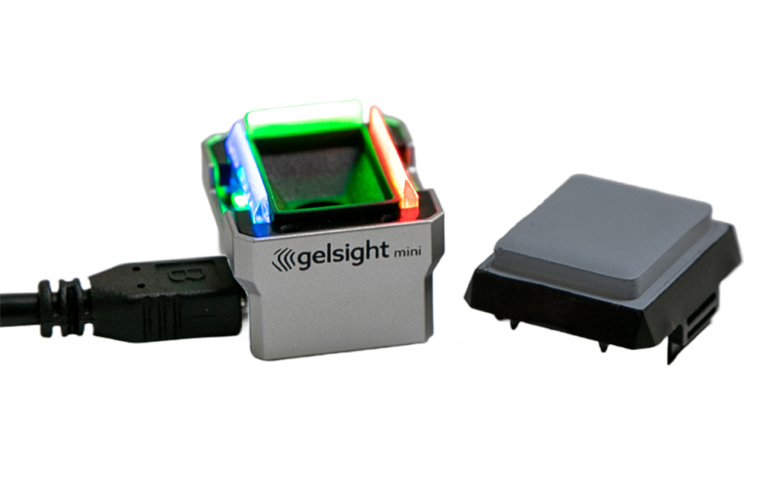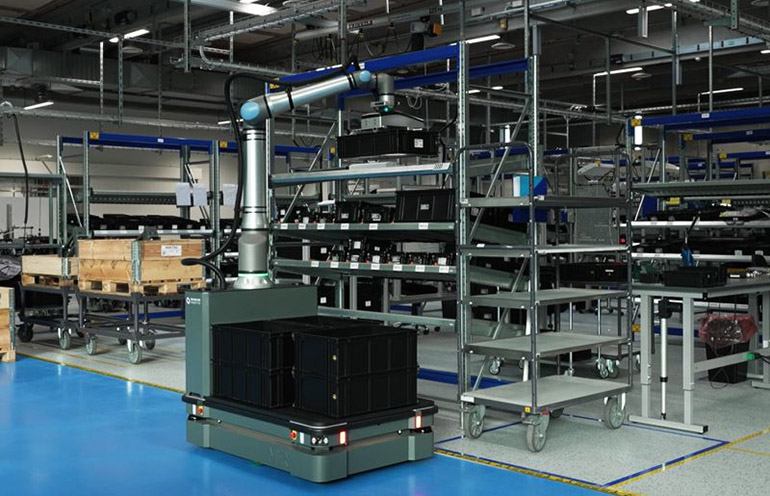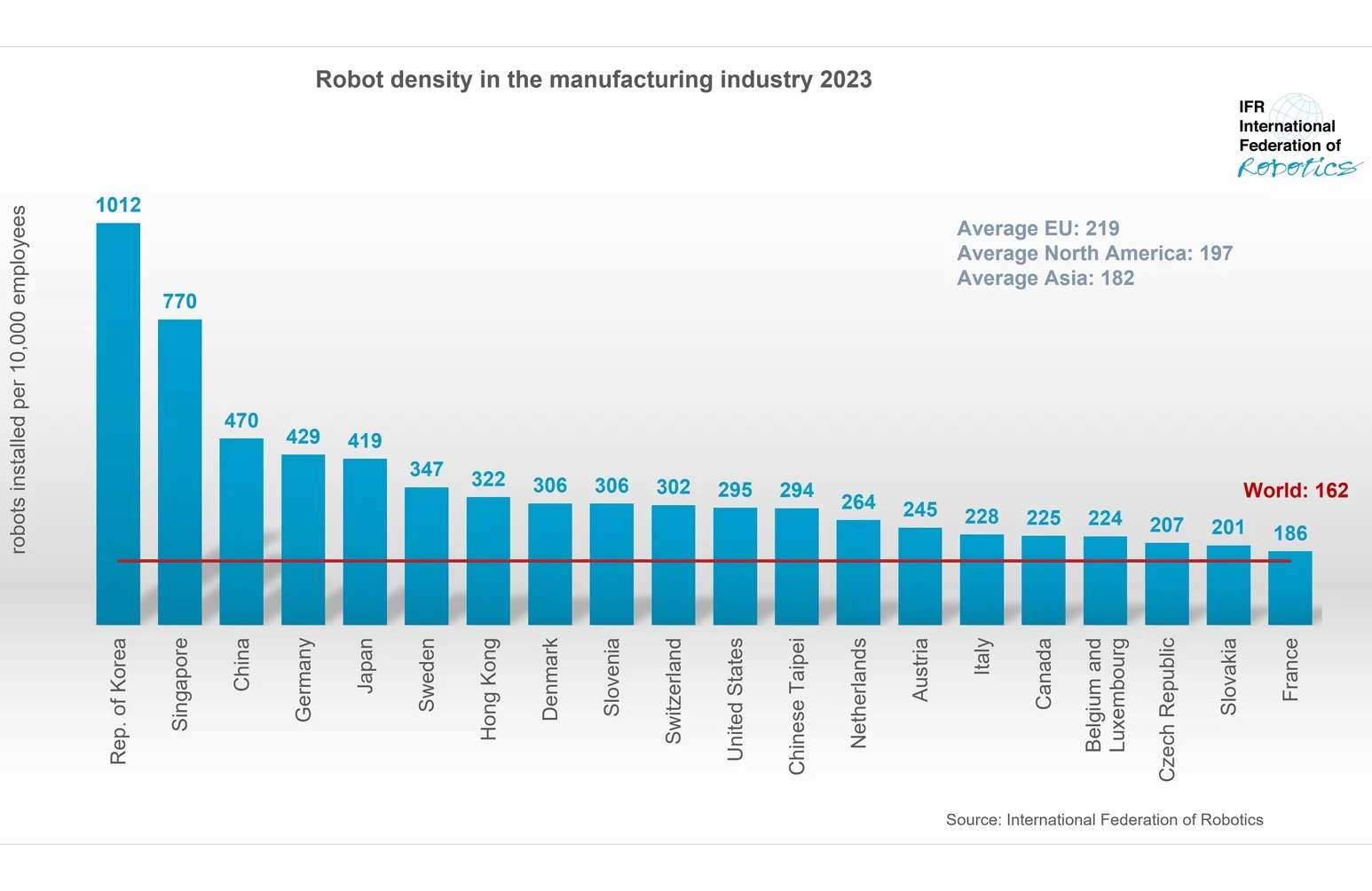GelSight & Flexxbotics are partnering for robot-enabled nondestructive testing. | Source: GelSight, Flexxbotics
GelSight has partnered with Flexxbotics to jointly provide a system for nondestructive testing, or NDT, with autonomous process control. It incorporates GelSight’s tactile sensing technology into Flexxbotics’ controls for robotic machine tending. The companies said the system provides precise quality inspection and digital thread traceability that can reduce time to inspect by 40% or more.
“In a lot of high-value manufacturing cases, like aerospace or medical, a lot of work around inspection has, for some reason, remained in the domain of very manual and analog types of processes,” Youssef Benmokhtar, CEO of GelSight, told The Robot Report.
“So the real value add that we bring, together with Flexxbotics, is the ability to completely automate a workflow that is today done using completely human-centric, analog, non-repeatable inspection techniques,” he added.
Customer needs drive partnership
GelSight and Flexxbotics said their partnership began with looking at the needs of their shared customers. According to Tyler Bouchard, the co-founder and CEO of Flexxbotics, customers are increasingly looking for an inspection product that is completely vertically integrated with their existing systems.
“For most of the customers that we’re talking with, the major thing that they’re looking for is higher throughput, so we’re reducing that through cutting downtime, higher yield,” he told The Robot Report. “They want to make sure that they’re reducing scrap and making sure that you’re adhering to your process every single time.”
In addition, many of the companies’ customers were experiencing labor shortages.
“We hear it from customers all the time. At least in North America and the Western world, it’s a very common problem,” Benmokhtar said. “Lots of our customers are saying, ‘I need to automate my process because I cannot find enough technicians that are qualified.’ This is true for aerospace, which is a strong market as us, but I’ve heard in medical as well.”
GelSight measures surfaces on the production line
Based on inventions at the Massachusetts Institute of Technology, GelSight’s proprietary technology provides detailed and rapid surface characterization. This enables several surface measurement applications and tactile sensing capabilities, claimed the Waltham, Mass.-based company.
GelSight said its its elastomeric 3D imaging systems can map surface finish and defects on any material at the micron level.
By combining this tactile sensing with Flexxbotics’ communications systems, customers can rapidly perform hundreds of precision measurements on the production line, the companies said. Without automation, end users have to manually transport parts to use specialized lab equipment or rely on outside laboratory services.
Flexxbotics coordinates for decision making
Flexxbotics said it provides interoperable communication between the robots and GelSight devices to coordinate the entire process. The Boston-based company noted that its tools can also connect directly with existing business systems in the plant including the CAD/PLM, QMS, industrial Internet of Things (IIoT), and others for closed-loop quality compliance.
Bouchard said the joint system works by taking the information gathered by GelSight and creating a closed feedback loop within the robot itself. Flexxbotics is tasked with determining the decision-making for the robot, he said.
“There are situations where it’s a dedicated inspection, where the robot is just working directly with GelSight,” said Bouchard. “In other situations, we actually are working with GelSight in line with other machining processes. So we can take that inspection information from GelSight and then through the robot, then coordinate what needs to happen on the machine.”
Companies agree that collaboration is key to growth
GeklSight and Flexxbotic said they envision a variety of use cases for their joint system. Their initial target industries include aerospace, defense, medical devices, automotive, and other industries where measurement accuracy is critical in tight tolerance processing.
The latest sensors and communications enable manufacturers to use industrial and collaborative robots to dramatically speed up inspection processes, increase throughput, and improve margins, they said.
Benmokhtar and Bouchard agreed that their collaboration is indicative of larger trends within the industry.
“Success for a company like us, honestly, only comes through partnerships,” said Benmokhtar. “In order for our sensing technology to be broadly adopted, you have to partner with others that are complementing your offering to really meet what the customers want.”
“We have a strategy at the company around building a very strong network of partnerships not only with Flexxbotics, but also with others that bring complimentary solutions to our technology,” he said.
Flexxbotics and GelSight work with feedback
Flexxbotics and GelSight said their systems are already in use in manufacturing and in forensics and robotics research labs around the world. Both companies said they plan to continue collaborating and improving their technologies.
“At GelSight, we’re working on continuing to improve our sensor offering through miniaturization, and improving its capabilities and the kinds of inspections you can do,” Benmokhtar said.
Flexxbotics is also interested in creating AI models using the data it has been gathering. Bouchard said that the industry is currently in a reactive state: The robot takes in feedback and then adjusts what it’s doing according to this feedback.
But with AI, Flexxbotics said it should be able to tell a robot or operator what to do before something happens.
“Because we have all the contextualized data and information that’s happening within the workcell, related to robot inspection and machinery equipment, we’re starting to use that data to create models now that are providing what we’re calling scripted adaptations,” Bouchard said.
Before companies can benefit from Flexxbotics and GelSight’s testing automation, they must first have a clear understanding of what they want to achieve, said Bouchard and Benmokhtar.
“Establish what your business outcomes are. That’s the most important thing,” Bouchard said. “Once you have that understanding, then we can help you derive what are the operational, and, more importantly, because of our specialties, the technical requirements that are needed to achieve those business outcomes.”

 2 months ago
35
2 months ago
35











 English (US) ·
English (US) ·